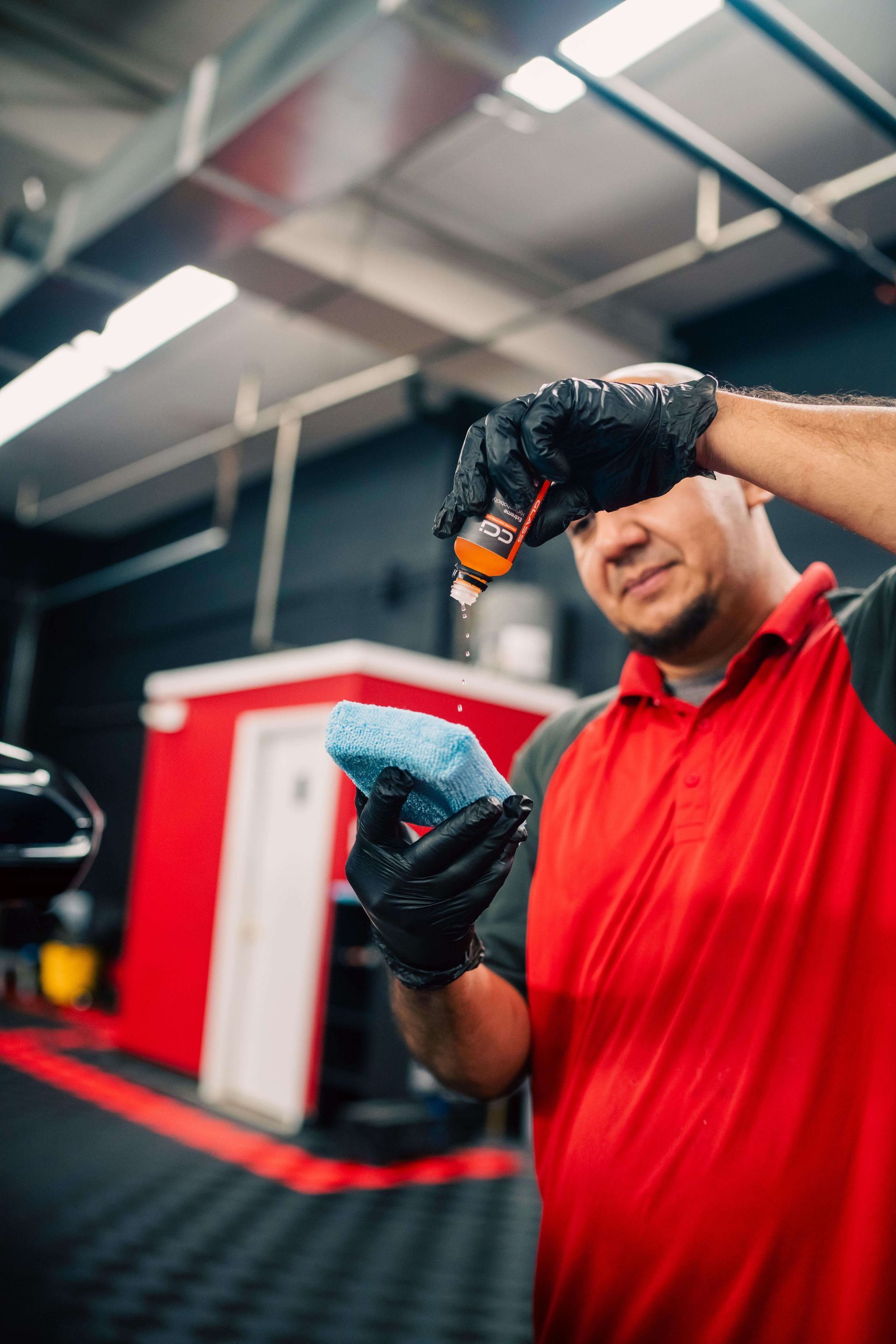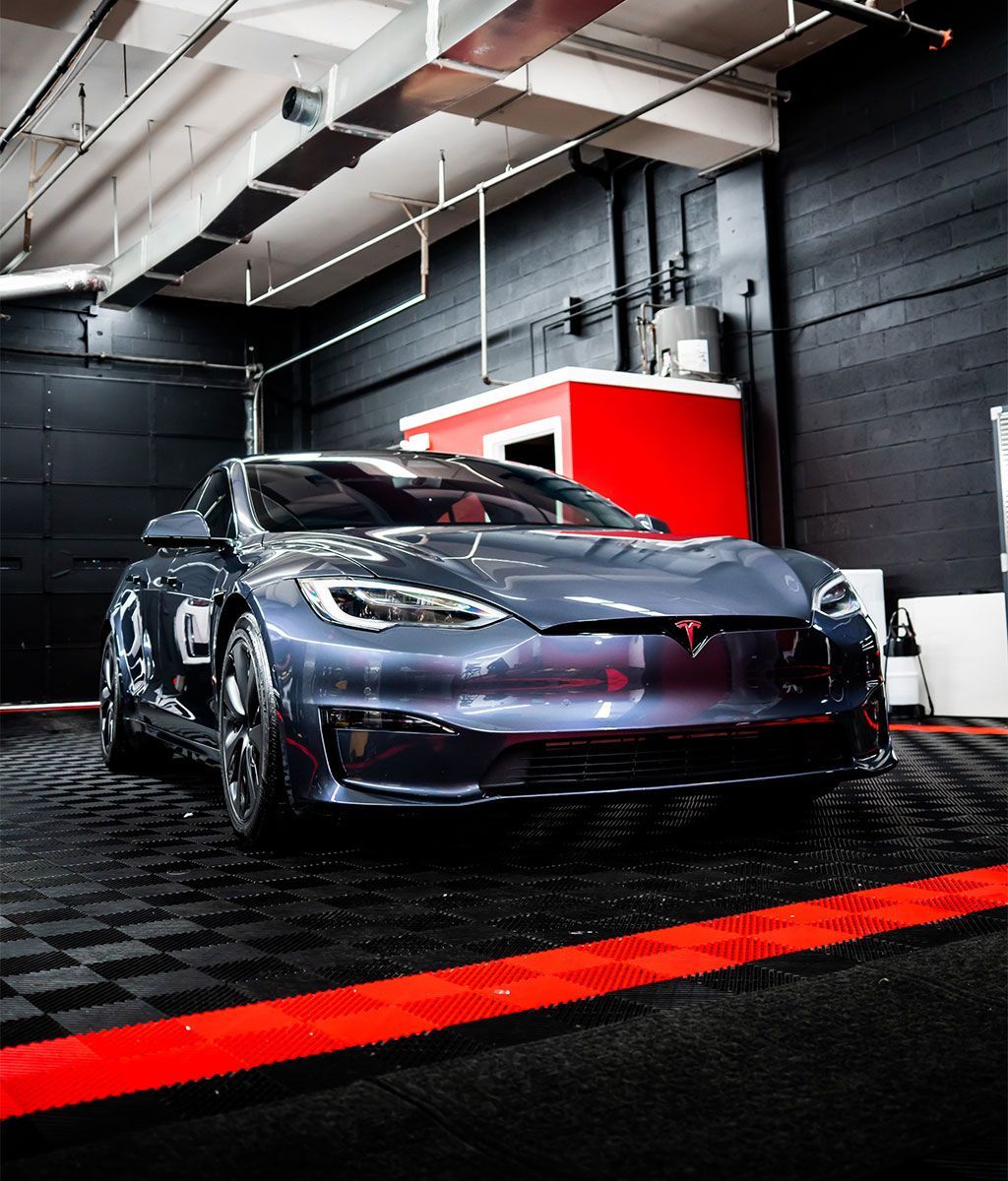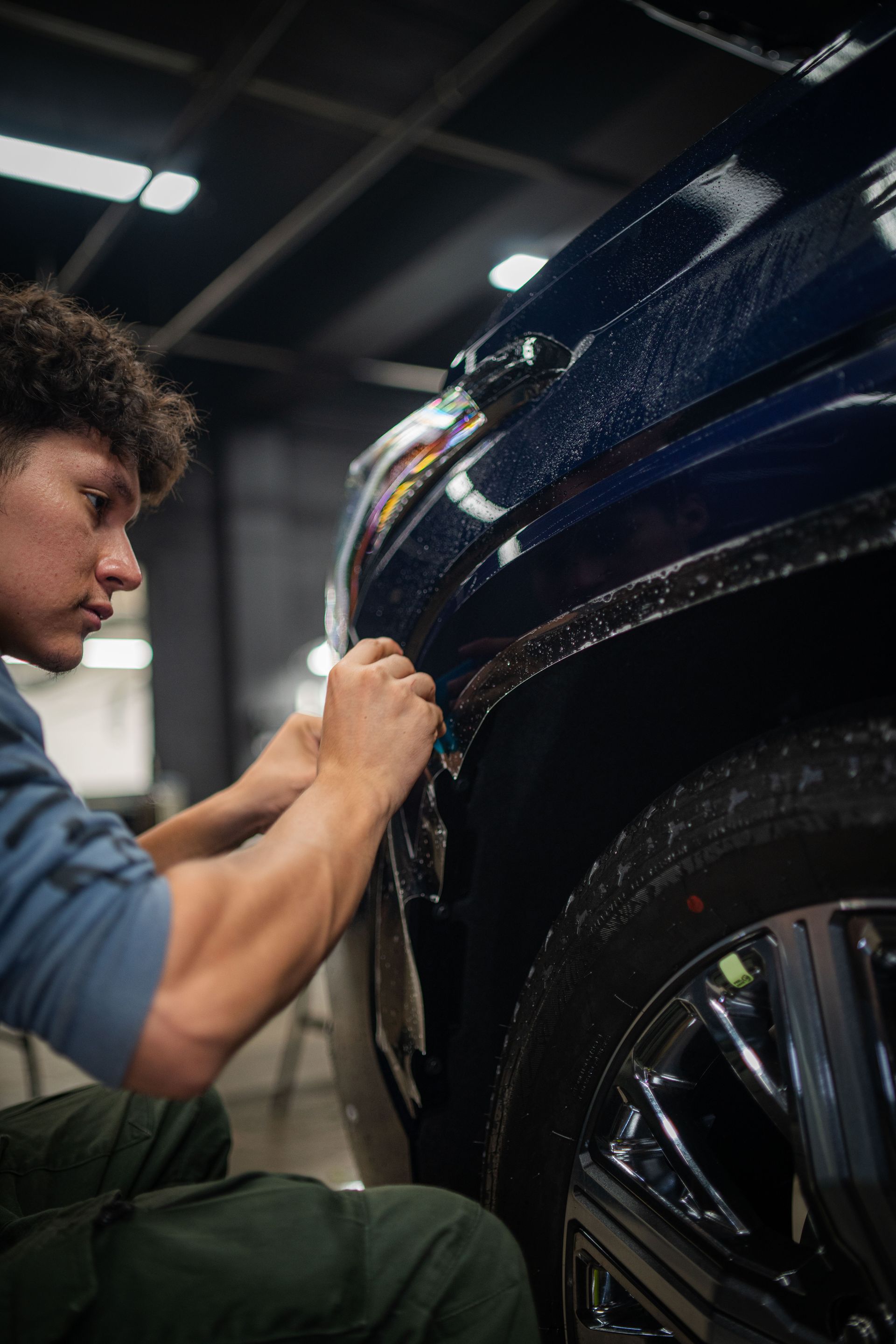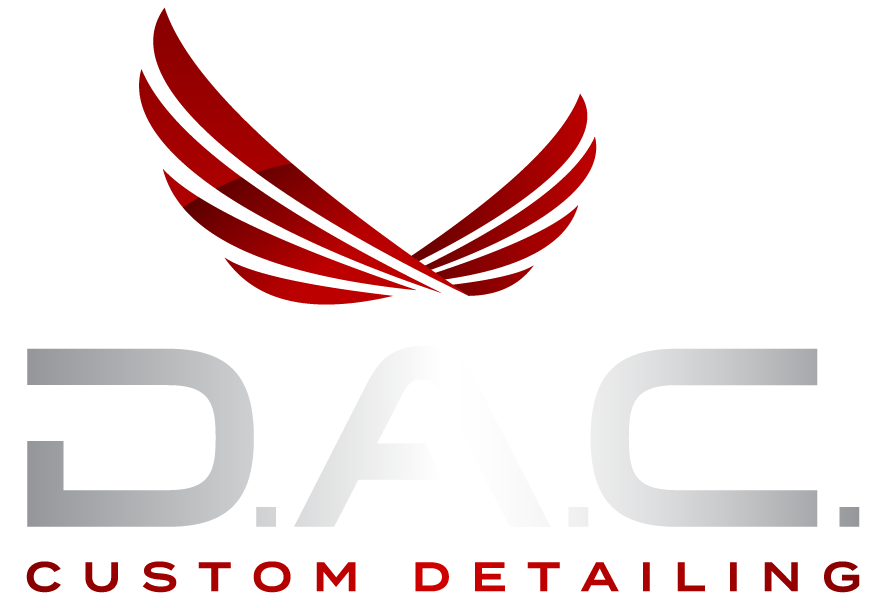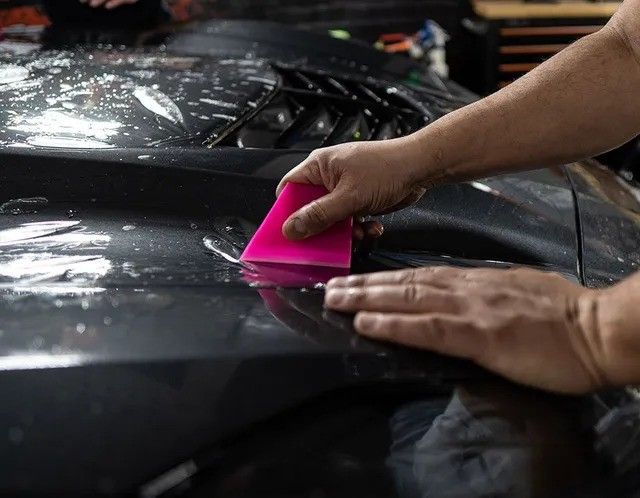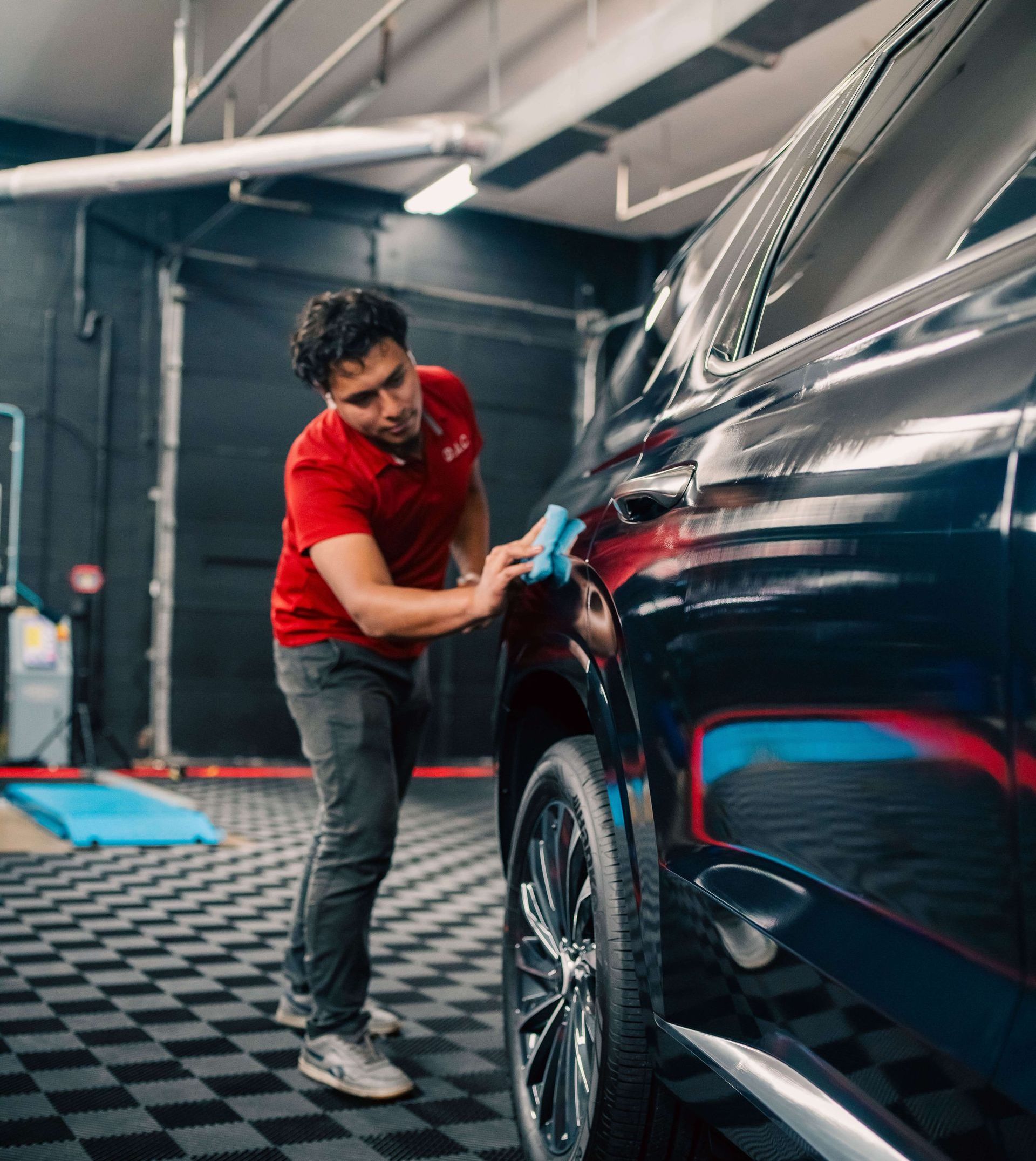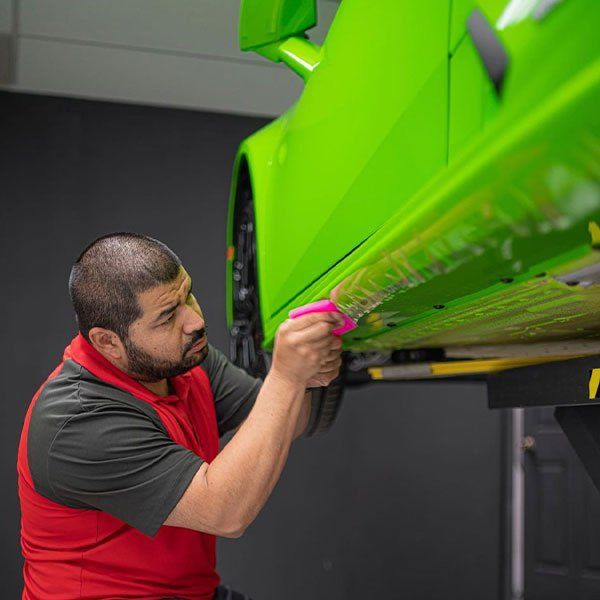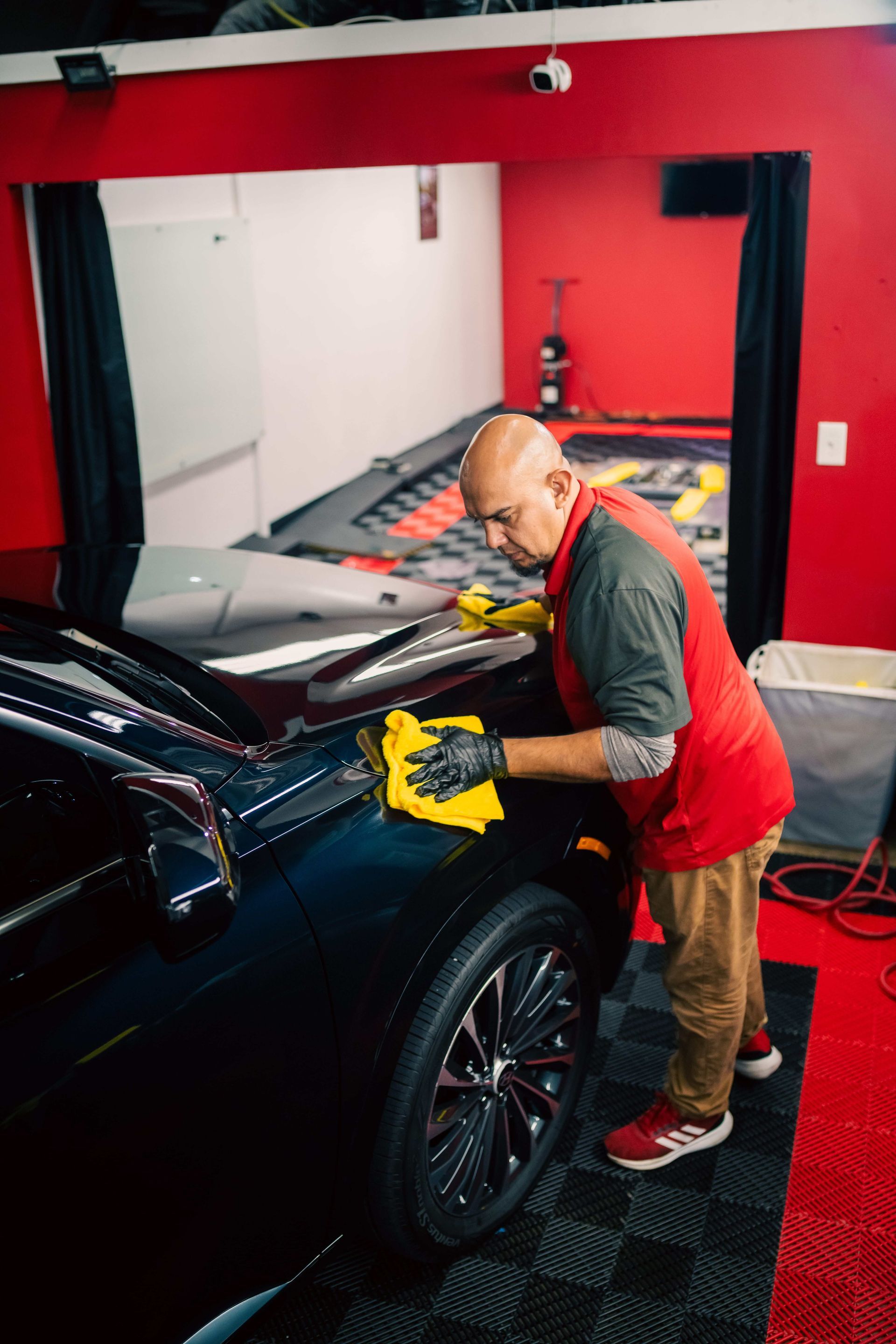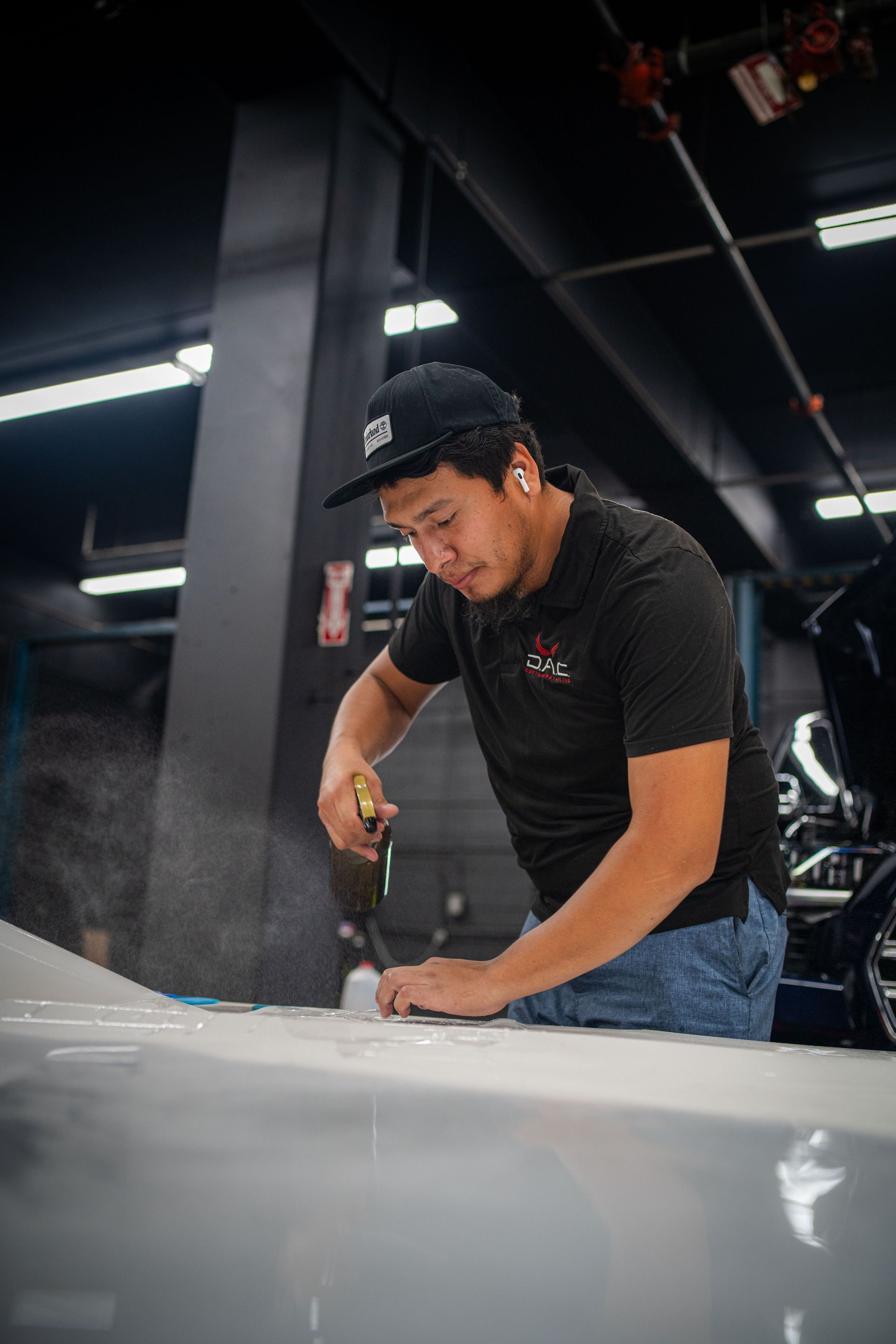REVIVE, PROTECT, MAINTAIN
Without a doubt, the allure of tinted windows cannot be undermined. They accentuate your car's aesthetic appeal, protect you from harmful UV rays, and offer an added layer of privacy while driving. But are you giving your elegantly tinted windows the proper care they need? Knowing how to maintain and clean them is paramount to keeping their condition pristine. Not to worry! This comprehensive guide will spell out everything you need to know about window tint maintenance and cleaning tips, ensuring that your tints remain unblemished and clear for years to come. Stay tuned as we peel back the layers on how to keep those glamorous tints in their best condition!
To keep your window tint looking great, it's important to follow a few key maintenance tips. Avoid using ammonia-based cleaners or abrasive materials that can damage the tint. Use a soft microfiber cloth and a gentle cleaning solution to remove any dirt or debris, paying special attention to the edges of the tint film. Be patient during the curing process, allowing the tint to fully dry before rolling down the windows or cleaning them. If you do notice any imperfections, such as air bubbles or discoloration, don't hesitate to contact a professional installer for advice on repair options.

Essential Window Tint Maintenance Tips
Proper maintenance and care are crucial to ensuring that your window tint remains in pristine condition and holds up well over time. By following these essential window tint maintenance tips, you can extend the lifespan of your tint and keep it looking great for years to come.
Firstly, it's important to note that after installing window tint, there is a curing process during which the film adheres properly to the glass. This process typically takes anywhere from a week to a month, depending on the climate. It's vital to allow this curing process to complete before cleaning or manipulating the tinted windows to avoid any moisture buildup or a hazy appearance. When it comes to cleaning tinted windows, it’s essential to use the right techniques and products. Avoid using cleaners that contain ammonia, as they can damage the film. Instead, opt for an ammonia-free cleaner.
To clean your tinted windows effectively, start by parking your car in the shade. Spray the cleaner on both the interior and exterior surfaces of the windows. It’s recommended to clean the windows in a vertical motion, starting from the top and working your way down. Pay close attention to the edges of the tint film while cleaning. Using a soft microfiber cloth or a squeegee is ideal for cleaning tinted windows. Avoid using paper towels, as they can potentially scratch the film. It's best to have two microfiber cloths—one for cleaning and another for drying—to prevent smears or streaks. Distilled water is preferable when cleaning your tinted windows, as tap water may leave white spots due to mineral deposits. By using distilled water, you can minimize any potential damage or discoloration.
In case you spot imperfections like air bubbles in your window tint, don't fret! You can easily remove them with a plastic card wrapped in a dry microfiber cloth. Simply poke small holes in the bubbles with a sharp needle to release the trapped air, and then use the card to smooth out the film. It’s worth mentioning that certain cleaning methods should be avoided altogether as they may cause damage. Steer clear of using razor blades, newspapers, scouring pads, or steam cleaning on tinted windows. Additionally, when visiting a car wash, ensure they don't use steam or harsh chemicals on your tinted windows. Rolling down the windows during a car wash with steam is generally recommended.
Daily Care for Tinted Glass
While proper maintenance goes a long way toward preserving your window tint's longevity, incorporating daily care habits can further enhance its overall condition. By making subtle changes to your routine, you can ensure the best possible outcome for your tinted glass.
One critical aspect of daily care is avoiding rolling down the windows immediately after getting them tinted. It's generally advised to give it at least three days before operating the windows to allow adequate time for the tint to fully adhere to the glass. When it comes to cleaning the inside of your tinted windows regularly, it's advisable to use a tint-safe automotive glass cleaner or similar products specifically designed for tinted surfaces. These specialized cleaners help maintain clarity without damaging or scratching the film.
When selecting glass cleaners for your tinted windows, always ensure they are ammonia-free. Ammonia can degrade and fade the tint over time and weaken the adhesive bonding it to the glass. To prevent any potential damage to your window tint while washing your car or dealing with other daily activities, inform car wash places and service centers about your tinted windows. By doing so, you can ensure that they use appropriate cleaning agents that won't harm the tint.
It's worth noting that applying decals or stickers directly onto the tinted surface can void the warranty and potentially damage the film during removal. If you want to add a decal or sticker, it's better to place it on the outside of the window instead. Finally, be mindful when driving with tinted windows, as it may attract attention from law enforcement officers in some areas. Different regions have varying laws regarding window tint darkness and restrictions, so familiarize yourself with the specific regulations in your location. Taking these daily care steps will help maintain your window tint's appearance and performance and ensure its longevity for years to come.
Dealing with Bubbles and Imperfections
Once you have had your windows tinted, it's important to inspect them for any bubbles or imperfections that may have occurred during the installation process. While most professional tint installers take great care to avoid such issues, sometimes small air bubbles or imperfections can still occur. The good news is that dealing with these bubbles is relatively simple. One method to remove air bubbles is to use a plastic card, like an ID card or a credit card, wrapped in a dry microfiber cloth. Gently press the edge of the card against the bubble and slowly slide it towards the edge of the window. This will help release trapped air and smooth out the film. It's important to be gentle and avoid using excessive force, as this may damage the tint.
For larger bubbles that cannot be easily smoothed out using the plastic card method, you can try poking small holes in them with a sharp needle. Once you have made a couple of tiny holes, gently press on the bubble to push out any remaining air. Again, exercise caution and ensure that you are not pressing too hard or puncturing the entire film. While it's possible to address minor imperfections on your own, if you encounter significant issues with your tint, it's best to reach out to a professional installer for assistance. They will have the experience and expertise to resolve more complex problems without causing further damage.
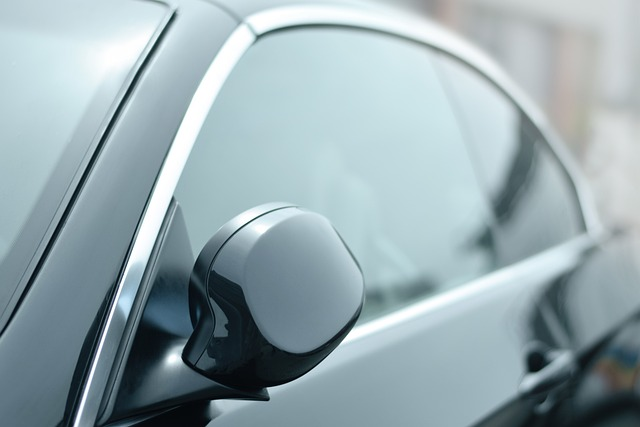
The Best Tools for Cleaning Tinted Windows
Maintaining clean and streak-free tinted windows is essential for not only maintaining their appearance but also prolonging their lifespan. However, it's important to use the right tools to avoid damaging the tint film. When it comes to cleaning tinted windows, it is recommended to use an ammonia-free cleaner or plain soap with warm water. Ammonia-based cleaners can harm the tint and cause it to fade or peel. Plain soap with warm water is a safe alternative that effectively removes dirt and grime without damaging the tint.
To scrub and clean the windows, opt for a soft microfiber cloth or sponge instead of abrasive materials like paper towels, scouring pads, or newspaper. A microfiber cloth is gentle on the tint and won't scratch or leave lint behind. For drying purposes, a squeegee or another clean microfiber cloth should be used to remove excess moisture without streaking. Remember to also pay special attention to the edges of the tint film when cleaning to ensure complete cleanliness.
Identifying Your Tint's Lifespan and Quality
Understanding the lifespan and quality of your window tint is vital to ensuring its longevity and satisfactory performance over time. Here are some key factors to consider:
- Manufacturer's Warranty: Start by referring to the manufacturer's warranty for information on your specific tint product. This will provide insight into the expected lifespan and any specific care guidelines recommended by the manufacturer.
- Tint Type: Different types of window tint have varying lifespans. For example, dyed film typically has a shorter lifespan compared to ceramic or high-performance films.
- Installation Quality: The quality of the installation plays a significant role in determining how long your window tint will last. A professionally installed tint with proper adhesion is more likely to have a longer lifespan compared to one installed incorrectly.
- Environmental Factors: Environmental factors such as sun exposure, climate, and humidity levels can affect the lifespan of your window tint. Tints installed in regions with intense sunlight or extreme weather conditions may require more frequent maintenance and replacement.
- Signs of Degradation: Regularly inspect your window tint for signs of degradation or damage. These may include bubbling, discoloration, peeling edges, or decreased heat rejection. If you notice any of these signs, it could indicate that your tint needs repair or replacement.
It's important to note that while window tints are designed to last for several years, they won't last indefinitely. As time goes on, the tint may naturally degrade due to exposure to UV rays and other external factors. By understanding these factors and regularly monitoring the condition of your window tint, you can take proactive steps to maintain its quality and address any issues before they worsen.
Warning Signs: When to Call a Professional
While maintaining and cleaning window tint yourself is doable, there are instances when it's best to seek the assistance of a professional. Knowing the warning signs that indicate you should call in the experts can save you from potential mistakes or further damage.
One significant red flag is if you notice any damage or peeling on your window tint. Over time, exposure to sunlight, extreme temperatures, or improper installation could lead to wear and tear. If you start seeing bubbles, cracks, or areas where the tint is lifting from the glass surface, it's crucial to have a professional assess and address the issue. Another sign that warrants professional attention is if your window tint becomes discolored or develops a hazy appearance. This could be an indication of moisture buildup between the tint film and the glass, compromising its effectiveness and aesthetics. Professionals have the expertise to evaluate whether restoration is possible or if replacement is necessary.
Additionally, certain situations may require expertise beyond just cleaning and maintenance. If you experience issues such as excessive glare inside your vehicle despite having tinted windows, it might be due to improper tint installation or low-quality films. A professional can diagnose the problem and provide solutions tailored to your specific needs. It's important to note that each state has its own regulations regarding window tint darkness and restrictions on certain windows, like windshields. If you find yourself questioning whether your current window tint complies with local laws or if you want an upgrade to a darker shade while remaining within legal limits, consulting a professional will ensure you stay in accordance with the law.
In summary, while basic window tint maintenance and cleaning can be done DIY-style, recognizing warning signs that indicate the need for professional assistance is vital. Damage, discoloration, excessive glare, legal compliance issues, or any concerns beyond routine maintenance are all valid reasons for calling in the experts who possess the knowledge and experience to address these situations effectively. Remember, it's better to err on the side of caution and consult a professional rather than risk further damage or compromising the functionality of your window tint.
Trusted Window Tint Experts in Temple Hills, MD
Elevate your driving experience with D.A.C. Custom Detailing, your trusted window tint experts in Temple Hills, MD. As the premier destination for automotive enhancement, we bring an unrivaled level of expertise to every window tint installation. With a keen eye for detail and a commitment to precision, our seasoned professionals ensure your vehicle's windows are transformed into a harmonious blend of style and function. Whether you seek enhanced privacy, reduced glare, or protection from UV rays, we tailor our tinting solutions to your specific needs. Step into a world of refined aesthetics and comfort. Contact D.A.C. Custom Detailing today to schedule an appointment and let us redefine the way you experience your vehicle through the art of window tinting.
Share with friends
